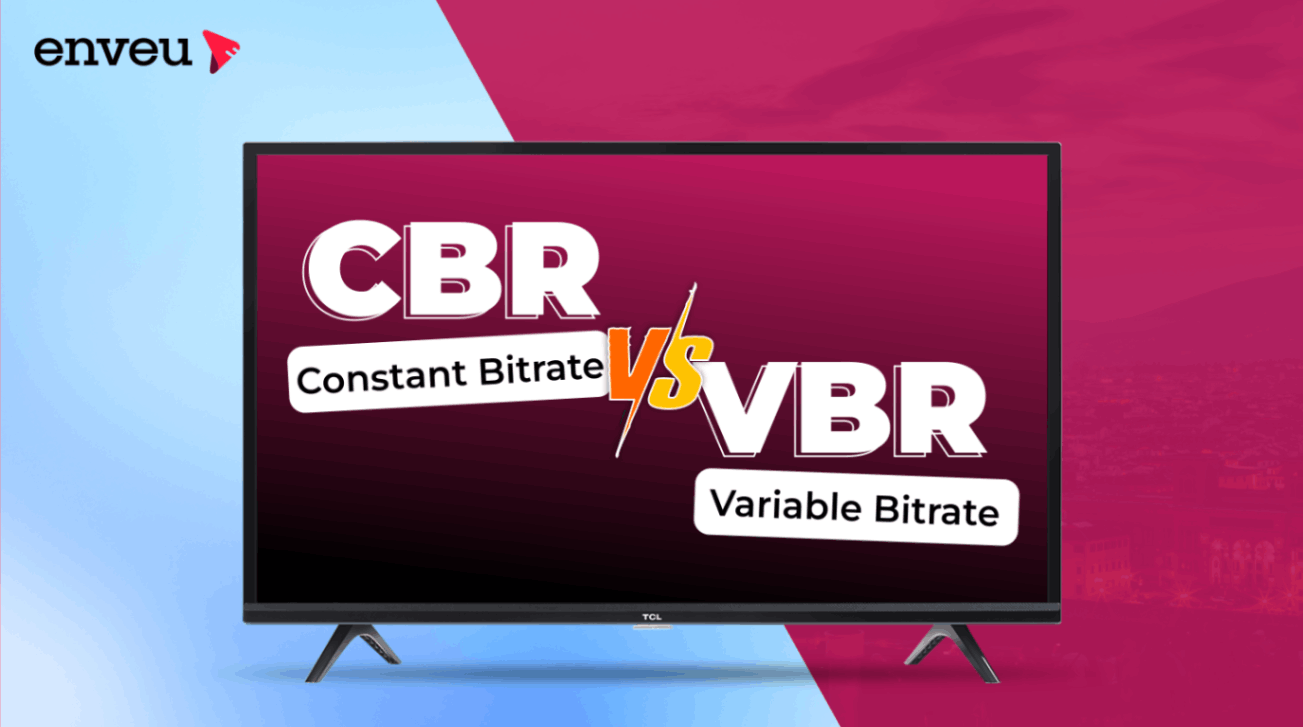Have you ever wondered what goes on behind the scenes of live streaming? Well, different types of technologies come together to deliver a highly high-quality video experience to viewers. Among them, encoders play a vital role. Encoding is a process of converting video file from one another, which ensure smooth video playback regardless of the network; at times, you have to create different bitrate or video qualities to give an optimal experience to viewers. When it comes to configuring their encoder settings, broadcasters have a lot of choices. You might have heard about Constant Bitrate (CBR) and Variable Bitrate (VBR) as the two prominent types of encoding. What are they, and how do they differ? Which one should you use? The blog has covered all your answers about CBR vs VBR. So, let’s get started.
Table of Contents
What is CBR?
There are two types of bit rate, Variable & Constant. Constant bit is CBR, which helps to maintains a consistent bit rate throughout the entire playback of the video. This makes videos easy to play and quick to load, since everything is constant from start to finish. It also helps to transmit data at a constant rate, as the name suggests. When it comes to encoding, it means using an encoder that outputs data at a constant rate. As a result, it is not responsive to the complexity or size of the files it processes. These variables are irrelevant to CBR, and the output remains constant. These consistencies offered by CBR make it perfect for real-time video encoding situations. However, it is not suited for storing data.
Pros | Cons |
|
|
|
|
|
|
|
What is VBR?
It is a variable bit rate or Video Bitrate. This generally determines the size and quality of video and audio files: the higher the bitrate, the better the rate, and the larger the file size because file size = bitrate (kilobits per second) x duration. Usually, 1 byte per second (1 b/s) corresponds to 8 bit/s. Depending on the level of detail needed, it uses as a dynamic bit rate that changes throughout playback. Slow live streaming scenes have fewer bits than fast-paced, action-packed scenes. Moreover, VBR is generally tricky for devices to playback – since the bit rate is constantly changing. It offers high- quality video quality without larger file sizes. It is best used for videos with either progressive downloads (like on YouTube or Vimeo) or direct downloads.
Pros |
| ||
|
| ||
|
| ||
|
| ||
| |||
Types of Video Bitrate
There are three types of VBR, such as _ Quality VBR, Unconstrained VBR and Constrained VBR,
- Quality VBR is designed to use as a single-pass encoding, which help to encode the data by using a high-quality for the output as a guiding light.
- Unconstrained VBR is designed to use multi-pass encoding. It helps broadcasters to encode the data using a set bitrate of your choosing as a guiding light. It treats this bitrate as the desired average and seeks the highest possible streaming quality across data segments while maintaining that average.
- Constrained VBR uses multi-pass encoding to encode the data using a set maximum bitrate and maximum buffer window as a guiding light. It uses these values to determine how to encode the da
Comparison Between constant bit rate vs variable bit rate
CBR
- Fixed quality.
- Constant bitrate is perfect for time-sensitive streaming.
- Guaranteed higher quality files.
- Produces consistent results (i.e. if you set it to 1500 kbps, your bitrate will remain at 1500 kbps)
- Quicker encoding.
- Historically popular
- Ideal setting for live stream encoding
- Well-suited for multimedia encoding
- Widely compatible
VBR
- Smaller file sizes.
- Varibale Bitrate is ideal for transcoding without time constraints.
- More efficient use of storage space.
- Does not negatively impact video quality.
- Capable of producing higher-quality streams
- Best-suited for VOD transcoding.
- Minimal reduction in quality.
- Does not negatively impact video quality.
- Possibly more limited support.
CBR VS VBR Which is Better Quality? Which Should I Pick?
CBR is more consistent and reliable for time-sensitive encoding, while VBR produces higher-quality results. For live streaming, you can consider VBR. It is the best for on-demand video uploads. Constant bit rate (CBR) and variable bit rate (VBR) both are compression and transmission techniques, which are widely used.
Conclusion
CBR and VBR are play an essential role in live video streaming process, which help to encode the data by using a high-quality for the output as a guiding light. Depending your streaming needs, you can choose anyone of them. The bottom line is that CBR is more consistent and reliable for time-sensitive encoding, and VBR produces higher-quality results. CBR is the best choice for live streaming, while restricted VBR is the best choice for on-demand video uploads.
